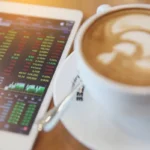In the fast-paced world of foreign exchange (Forex) trading, understanding the nuts and bolts of how to calculate your investments is crucial for both novice and seasoned traders alike. The ability to precisely assess and manage your positions can spell the difference between success and failure. This article delves into the key aspects of Forex calculations, empowering you with the knowledge to navigate the complexities of the market.
Understanding the Basics of Forex Trading

Forex trading involves the simultaneous buying of one currency and selling of another, with the aim of profiting from changes in exchange rates. Currencies are traded in pairs, such as the Euro against the US Dollar (EUR/USD), and prices fluctuate based on economic, political, and market sentiment factors. The Forex market is the largest financial market globally, characterized by high liquidity and 24-hour trading during weekdays. Participants range from governments and financial institutions to individual investors. Successful Forex trading hinges on understanding market trends, leverage, and the risks involved. It’s also essential to be proficient in calculating investment values, positions sizes, and potential profits or losses.
Deciphering Forex Quotes and Pairs

Forex pairs are quoted in terms of the base currency (the first currency) and the quote currency (the second currency). The price represents how much of the quote currency is needed to purchase one unit of the base currency. For instance, if the EUR/USD is trading at 1.2000, it means 1 Euro can be exchanged for 1.20 US Dollars. Forex quotes include a bid (buy) and ask (sell) price, with the spread between them representing the broker’s profit. Major pairs involve the USD and are the most traded, while crosses and exotics involve other currencies. Understanding these quotes is fundamental to calculating your Forex investments.
Calculating Your Position Size in Forex

Position size in Forex trading is crucial for managing risk and maximizing profitability. It determines how much of a currency pair you should trade, based on your risk tolerance and the size of your account. To calculate your position size, you first need to decide on the percentage of your account you’re willing to risk on a single trade. A common approach is to risk 1-2% per trade. Then, calculate the dollar amount at risk by multiplying this percentage by your account size. Lastly, divide the dollar amount at risk by the stop-loss in pips, adjusted for the value per pip, to get your ideal position size. This method helps in maintaining a balanced approach to Forex trading, ensuring that losses do not disproportionately affect your account.
Managing Risk: Stop-Loss and Take-Profit Strategies

Utilizing stop-loss and take-profit orders is essential for effective risk management in Forex trading. A stop-loss order automatically closes a position at a predetermined price to prevent further losses, while a take-profit order secures profits by closing the position once it reaches a certain price level. Setting these orders requires understanding the market conditions and your risk tolerance. The key is to place stop-loss orders at points where the market conditions invalidate your trading strategy. On the other hand, take-profit orders should be set at levels where the market is expected to face resistance or reversal, locking in profits before any potential downturn.
Leverage in Forex: A Double-Edged Sword

Leverage in Forex allows traders to control large positions with a relatively small amount of capital, amplifying potential profits but also increasing potential losses. It’s expressed as a ratio, such as 50:1, meaning you can control $50 in the market for every $1 in your account. While leverage can boost gains in favorable market conditions, it can also magnify losses during adverse moves. Therefore, it’s critical to use leverage judently and in conjunction with strict risk management tools like stop-loss orders. Understanding how to calculate the impact of leverage on your positions is a fundamental aspect of Forex trading, ensuring that you don’t overextend your account.
Evaluating Performance: Tracking Your Forex Gains

Monitoring and evaluating your Forex trading performance is vital for long-term success. This involves not only tracking your gains and losses but also analyzing your decision-making process and strategy effectiveness. Keeping a detailed trading journal where you record trade setups, outcomes, and personal reflections can provide valuable insights into your trading habits and areas for improvement. Additionally, calculating your win rate, the average gain-to-loss ratio, and the overall profitability ratio are quantitative measures to assess your trading performance. This continuous evaluation enables traders to refine their strategies, adjust risk management practices, and enhance their market analysis skills.
Comparison Table: Major Forex Pairs vs. Crosses and Exotics
| Features | Major Pairs | Crosses | Exotics |
|---|---|---|---|
| USD Involvement | Yes | No | Seldom |
| Liquidity | High | Medium | Low |
| Volatility | Moderate | Variable | High |
| Spread | Low | Medium | High |
| Example | EUR/USD | EUR/GBP | USD/SGD |
| Ideal for | Beginners and Intermediates | Experienced | Risk-Tolerant Traders |
Understanding the distinctions between these categories of pairs is crucial for Forex traders, influencing strategy, risk management, and potential returns. As you delve into Forex trading, keep in mind that knowledge, strategic planning, and risk management are your best tools for achieving success in this dynamic market.







Too complex for beginners. Need more simple explanations.
What is a pip? The article didn’t explain clearly.
Why use leverage if it’s so risky? Don’t get it.
Difference between major pairs and exotics not clear.
How to set stop-loss and take-profit? Seems confusing.
I don’t understand about position size. Can you explain more?
Tracking performance is hard. Any tools to help?
The article is not clear. How to practice these calculations?